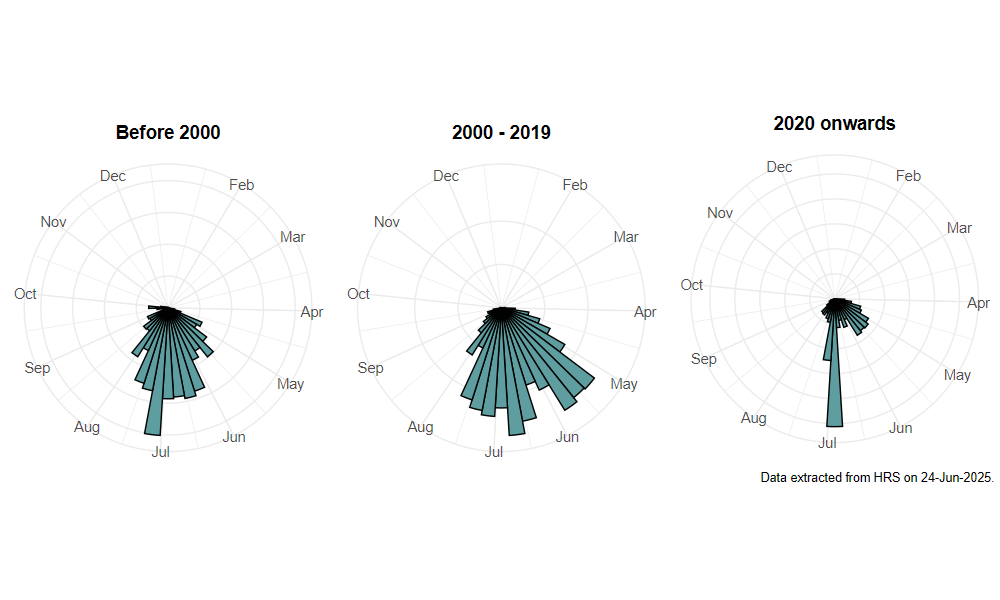Neoascia tenur (Harris, 1780)
Identification
Identification difficulty = 3. ![]()
![]() according to Ball & Morris, 20241
according to Ball & Morris, 20241
Synonymy
Neoascia dispar (Meigen, 1822) in Coe(1953)2 and Kloet & Hincks (1976)3.
Biology
The larva has been found at about the level of the water surface within the stem sheaths of dead Reedmace Typha sp. in a slow flowing stream. As an adult, this is probably the most frequently encountered member of the genus, occurring in lush vegetation around the margins of all types of water body, especially where beds of emergent plants such as Reed Sweet Grass Glyceria maxima, Greater Reedmace Typha latifolia or Common Reed Phragmites australis are present. Adults are most often found by sweeping such vegetation, but will visit a wide range of flowers.
Flight period
The following plots show the number of unique records per week excluding those reported to be of immature stages.

Distribution
Widespread in wetlands throughout Britain, and often extremely abundant in suitable habitat. Generally less well recorded from upland areas, suggesting that any increase in occurrence may be a result of additional recorder effort.

Trends
The following plots show the Frescalo TFactor vs year and a map of the rescaled frequency (all records) for the species.
-
Ball, S., & Morris, R. (2024). Hoverflies of Britain and Ireland. WILDGuides (3rd ed.). Oxford: Princeton University Press. ↩
-
Coe, R. (1953). Diptera: Syrphidae. Handbooks for the Identification of British Insects, 10(1), 1–98. ↩
-
Kloet, G., & Hinks, W. (1976). A check list of British insects. 2nd Ed. Part 5: Diptera and Siphonaptera. Handbooks for the Identification of British Insects, 11, 1–139. ↩